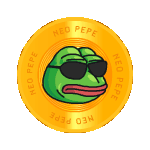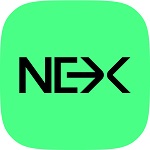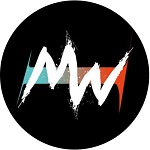 | GOLD.IOICO GOLD.IO is a Decentralized Autonomous Exchange (DEX) based on EOSIO. As a Decentralized Autonomous Community (DAC), GOLD.IOs open democracy is achieved through complete on-chain governance. The decentralized exchange structure eliminates all middlemen and lets the Community be the only custodian for all of their gold investments. The Community holds the power to vote for the development of any number OF multi-purpose sidechains and realize the GOLD.IO infinite scalablity feature. GOLD.IO will be an exchange where digital assets related exclusively to GOLD.IO are listed. IMPORTANT: By investing in this business you agree to ourDisclaimer. All information including our rating, is provided merely for informational purposes. CryptoTotem does not provide investment advice. |
Overview
|
What is GOLD.IO
GOLD.IO is a Decentralized Autonomous Exchange (DEX) based on EOSIO. As a Decentralized Autonomous Community (DAC), GOLD.IO’s open democracy is achieved through complete on-chain governance. More specifically, GOLD.IO functions entirely through smart contracts that are independent and goal oriented, created by the people in the system who share similar visions about the future and are willing to adhere to common rules, all distributed across distinct locations around the globe through copies and backups.
Our vision is to create a self-governing market system wherein its participants decide upon those projects that deserve their attention and support. In its inception, GOLD.IO will be an exchange where digital assets related exclusively to GOLD.IO are listed. It is our belief that by utilizing EOSIO’s infrastructure and leveraging existing DLT solutions we will create communities that eliminate all principal-agent problems and ultimately create a more efficient GOLD.IO market.
Centralized Exchanges
Decentralized Exchanges
This is by no means an exhaustive list (regulation is another topic), nonetheless it provides an idea of the myriad of risks and drawbacks inherent to centralized and decentralized exchanges.
GOLD.IO DEX. Solving the Issues of Centralized Exchanges
The distributed nodes framework ensures that hacks are prevented and downtime is brought to zero. The risk of regulatory interference is also eliminated while privacy is ensured as no documents are required participate in the exchange process. Naturally, all custody issues are resolved as the users have full control over their funds, which are being kept in their own addresses. Finally, any trade on the exchange is verifiable through the public blockchain. In the next section, a thesis is laid down of how the DAC design resolves an array of agency issues immanent to centralized exchanges and unresolvable by the traditional setup of decentralized exchanges.
Solving the Issues of Decentralized Exchanges
At GOLD.IO, orderbook, matching, and settlement are entirely on-chain supporting also sophisticated order types beyond market and limit. EOSIO’s block confirmation time of about half a second allows for this type of design, of a completely decentralized exchange. EOSIO has no transaction fees effectively setting the default withdrawal and trading costs to zero. These features solve the majority of the issues related to DEXs described in the previous paragraph with the exception of fiat pairs, centralized hosting, and most importantly inter-chain communication.
Interoperability between chains allows for cross-chain transactions usually achieved through atomic swaps and payment channels. Having this interoperability, the listing of stablecoins based on any blockchain is possible effectively solving the problem of lack of fiat pairing to a large extent. In other words, users will be able to use a stablecoin as a “hedge” in times of substantially large market volatility and have the convenience of fiat denomination.
Centralized hosting is naturally avoided by the design of GOLD.IO where the block producers of a sisterchain are geographically dispersed. If a sisterchain ceases to function then the operations of the DEX are temporarily transferred to the EOSIO blockchain or another sisterchain.
Finally, the instantaneity of exchange prevents the possibility of having a trade broadcasted to the chain and unconfirmed while miners take advantage by executing their own trades ahead of the rest. Having these issues resolved will also promote liquidity as the most traded pairs on centralized exchanges are those with a stablecoin or fiat.
DetailsPublic sales: Dec 13, 2018 - Feb 12, 2019Soft cap: 121,100,000 GIO Hard cap: 570,934,424 GIO LegalOffice address: Landmark Square,64 Earth Close, P.O. Box 707 Camana Bay, Grand Cayman, KY1-9006, Cayman Islands. | Token infoTicker: GIO |














